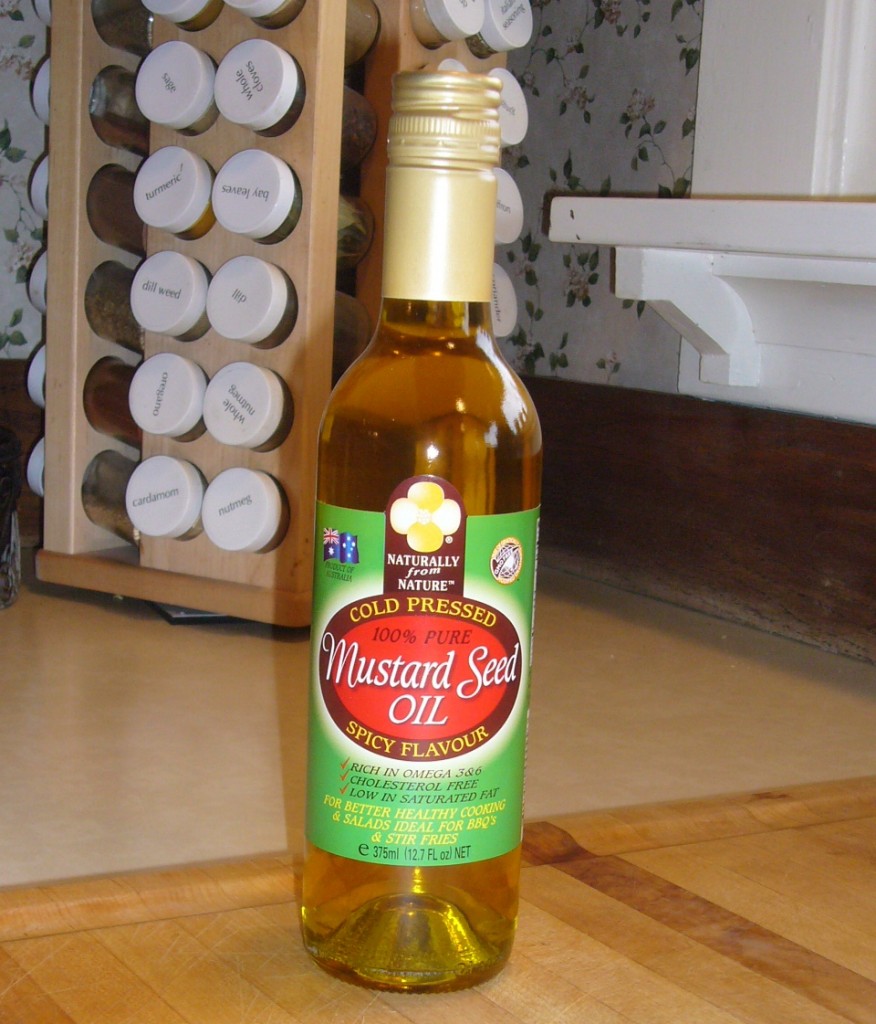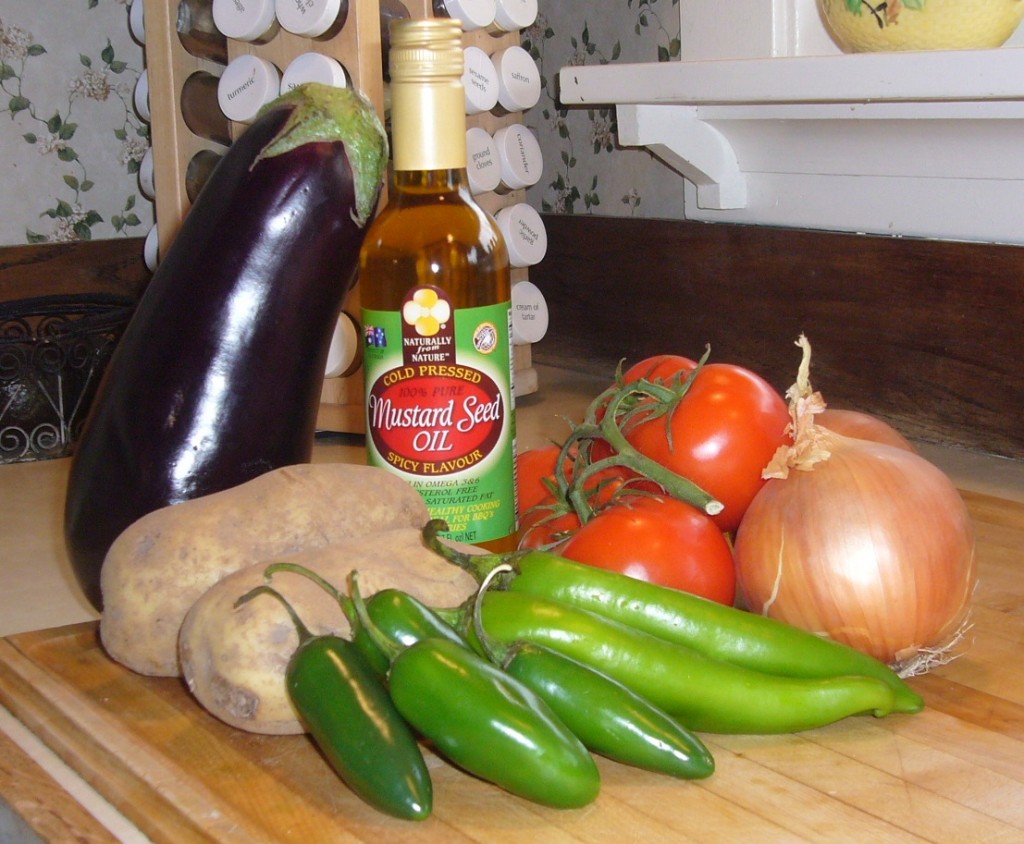Hot and Sour Garlic Braised Eggplant
There comes a time each winter when I begin to crave the flavors of Khatti Bhaji. I hadn’t cooked it in years because I couldn’t find the one ingredient for which there is no substitute: mustard seed oil. When I thought about it more I realized that I hadn’t made this dish since before I was pregnant with my oldest child. In the food aversion haze of pregnancy I forgot about Khatti Bhaji but in later years I would remember it, search for mustard seed oil, not find it, and forget about it until the next winter. It just so happens that my oldest was born in 1998, which is the same year mustard seed oil was banned in India under suspicious circumstances. When I started my research about the unavailability of mustard seed oil I had no idea I was opening up a big can of worms that includes heavy handed government intervention in the food supply, genetic modification of soy, and Monsanto.
I will continue to use mustard oil in my cooking. Indian people have been using it for thousands of years with no ill effect known as long as it was pure. You can buy mustard oil in the US but you will find it labelled “for external use only”. In Ayurvedic medicine mustard oil is used both as a food ingredient and externally to balance certain conditions or constitutions. If you are concerned about the quality of the oil, search online for “cold pressed mustard seed oil” you’ll find some high quality oils to use for your cooking. The one I chose was imported from Australia. It’s a little pricey about $21.00 for about 13 oz. but I won’t be using more than a bottle a year.
Now here’s a question: should I be worried about eating all these fruits of the nightshade family (eggplant, tomato, potato, chile pepper)? I know they are known to cause inflammation but the medicinal role of food in Indian culture makes me think there is some chemical reaction that occurs in the heating of the mustard oil and the cooking of the ingredients that may reduce any negative effects. My knee will let me know tomorrow.
Khatti Bhaji (Hot and Sour Garlic Braised Eggplant)
Recipe from Classic Indian Vegetable and Grain Cooking by Julie Sahni
For 6 Persons
1 medium eggplant (about 1 pound), unpeeled
1/2 pound baking potatoes (about 2 large ones)
1 cup mustard oil (or light vegetable oil or a combination)
1/3 cup slice garlic
2 1/2 cups thinly sliced onions
4-8 hot green chilies, thickly shredded
1/2 teaspoon turmeric
1/2=1 teaspoon cayenne pepper
2 1/2 cups thinly sliced tomatoes
1 1/2 teaspoons coarse salt, or to taste
- Cut the eggplant with its skin in half lengthwise. Cut each half across into halves. Cut each quarter into long slices about 3/8 inch thick. Scrub the potatoes clean under cold running water and pat them dry. Cut the potatoes into half lengthwise. cut each half into long slices about 3/8 inch thick. Put the eggplant and potato slices in a large bowl of water and set aside. NOTE: Don’t put the eggplant slices and potato slices in the same bowl as you will need to add them at different times in the cooking process.
- Measure out the spices and place them right next to the stove in separate piles. Heat the mustard oil in a very large kadhai or large 5 quart heavy skillet until very hot and smoking. Turn off the heat and let the oil cool for a few minutes (if you are using vegetable or a combination of mustard and vegetable oils, skip this step). Heat the oil again over high heat. When it is very hot, add the garlic and cook, stirring and turning, for 2 minutes or until it begins to color.
- Add the onion and continue cooking for 5 minutes. Add the chilies and cook for 2 minutes more. Add the turmeric and cayenne pepper and let it sizzle for 30 seconds.
- Add the eggplant, mix the ingredients, and cook, turning the vegetables to distribute the spices and adjusting the heat as necessary, for 8 minutes or until the eggplant softens slightly and begins to fry. Add the potatoes and continue cooking, turning them, for 3 minutes. Add the tomatoes along with the salt and reduce the heat to medium-high. Cook the vegetables turning them constantly for 10 minutes. Finally reduce the heat to medium-low and let the vegetables fry, undisturbed, until they are soft.

